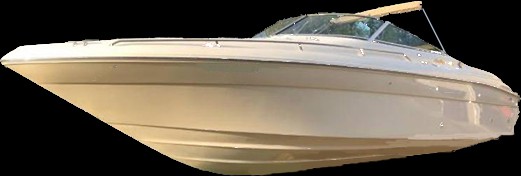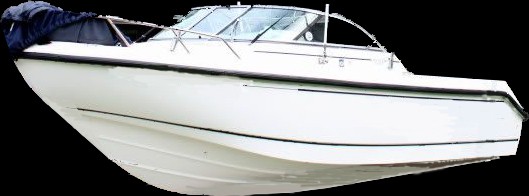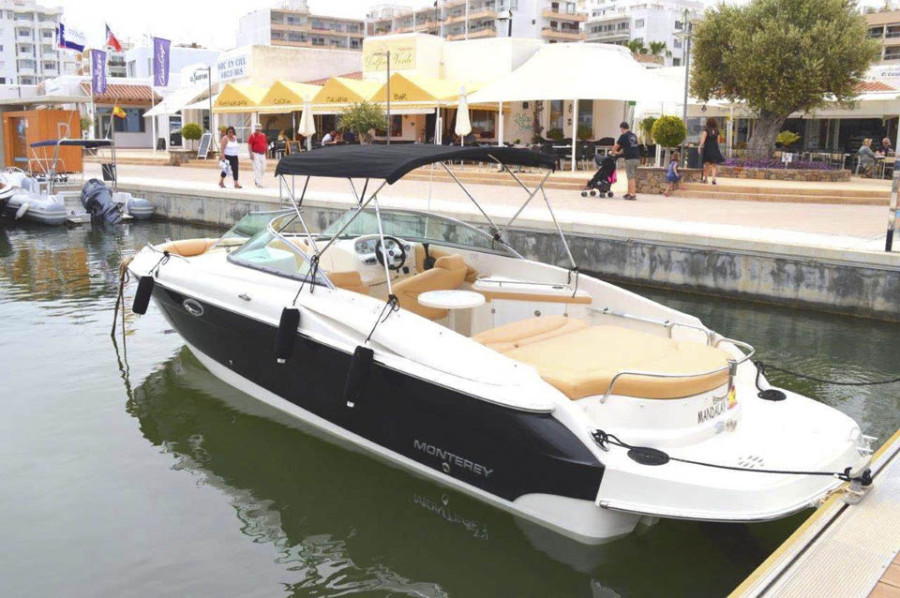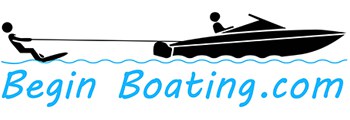Bowriders seem to be the ultimate family boat, but how do they perform in the ocean? There are just a few things that need to be considered.
Bowriders that are over 25′ can generally handle going out into the ocean with an experienced captain. However, Center Console and Dual Console boats tend to have hulls that are better designed to take ocean waves and wakes, yet still have an open bow design.
People with years of experience are better able to judge weather and water conditions each day. It is vital to avoid getting into a situation that is beyond your abilities. Let’s check out some characteristics of the open bow boat options that will keep you more safe.
Bowrider Design
Generally bowrider boats that are 24′ and under are more designed for family fun out on lakes. The waves and wakes produced on most inland lakes are smaller and/or more choppy in nature. Thus the bow can ride closer to the water without running much risk of a wave coming in over the bow of the boat.
That’s not to say it can’t happen, because I have seen it happen several times. It usually happens to inexperienced boaters who have a few people in the bow. They see that they are approaching a larger set of waves and they pull back on the throttle to reduce speed.
This action causes the bow of the boat to dive deeper into the water and the wave easily overtakes the bow. All the riders up front get soaked, along with the interior. The bilge pump has to work overtime to pump the water back out of the boat unless it is a self bailing deck.
Here is a video showing what happens when you pull back the throttle and let the bow dive. This driver did this on purpose for his kids enjoyment, but in the big waves of the ocean, this can sink a boat quickly.
The interesting thing is, that there are likely more waves in that set, so the bow is overtaken two or three times before it’s over. When waves approach two or three feet in height, these smaller boats shouldn’t have people riding in the bow.
Taking A Wave
When you are approaching a larger set of waves, throttle and trim become effective tools for making your bowrider take the wave without stuffing the bow. You also have to judge the distance between waves to know if your boat can bridge from crest to crest or if it’s going to fall into the trough.
If your boat is falling into the trough, you are susceptible to stuffing the bow through the next wave. However, if you raise your trim and accelerate a bit, you will get some bow lift and aid it in clearing the crest. Then back off the throttle as you crest so you are ready to repeat for the next wave.
You can also experiment with taking the waves at a slight angle. This creates a smoother transition. As waves get larger, you may need to reduce the angle and steer slightly into the wave as you are going up it. The trick is to relax and take it slow. Experiment to see how your boat reacts.
A captains ability to control the boat can be the difference between a safe day of boating, or a day trying to recover a boat from the bottom of the lake or ocean. A good captain will see conditions change and reposition riders out of the bow, install the bow cover, and close the pass-through window.
From there it’s all about navigation, throttle control, and trim. After all, it’s the captain’s responsibility to keep everyone on board safe. It’s not always a fun job, but it’s the most important job.
Bowrider Hull Design
In the images below you’ll see a generalized difference in hull design between a common bowrider versus that of a Center Console or Dual Console boat. Compare the bow height and rise from one boat to the other.


You’ll notice that the Dual Console boat has a much more abrupt approach angle and a raised bow. This boat can take a much taller wave, but it will also begin lifting the bow sooner allowing it to ride up a wave and avoid plowing through it.
In contrast, this Bowrider has relatively no rise to the bow design. The Bowrider also has a far less abrupt approach angle to the hull design at the bow. This means that a wave is going to meet the hull and begin creating lift at a much later point.
So think of an approaching wave at the point where the water is just rising (the very first part of a wave). We are considering the distance from where it passes beneath the tip of the bow, to the point where it makes contact with the hull.
Considering the images above, the distance will be shortest with the Dual Console boat. That means the DC boat is going to start rising with the wave sooner to avoid the wave breaching the bow. However, depending on the wave, it may breach the bow of a Bowrider before the boat even begins to rise.
There are many different hull designs within the Bowrider market, but generally speaking, the Bowrider has the bow closer to the water for lake activities. This isn’t as good for larger wave conditions. Again, you can use your throttle and trim to create more bow lift as long as your timing is good. Practice. Practice, Practice.
Below is a picture of a Monterey 268ss. It’s like mine, but I haven’t taken mine out of storage yet this season. It is a Bowrider design, but at 29′ from tip to tail, it’s a bigger boat that could handle the ocean. I would want to pick my days of taking it out to avoid getting in over mine or my boats capabilities in rougher water conditions.

Taking On Ocean Conditions
If you’re looking for the right boat for your style of boating, there are a few things you need to consider when venturing out into the ocean with friends and family on board.
- Are your piloting skills good enough for any condition changes that may pop up?
- No matter what anyone else may want you to do, you stick within your abilities and comfort level with passengers on board.
- Are your navigation skills and equipment good?
- Do you have all the safety equipment, and know how to use it all?
As far as the best boat for ocean trips, and that also has an open bow, you may want to seriously consider Dual Console or Center Console boats. They may not have all the creature comforts of Bowriders, such as:
- plush seating
- relaxing sun decks
- carpeting
- set up more for watersports activities such as wakeboarding, watersking, tubing, etc.
However, DC and CC boats still have an open bow for seating and fishing access. They also offer:
 better designed hulls for handling larger waves
better designed hulls for handling larger waves- self bailing deck designs to remove any water that makes it into the boat
- no carpeting to get stinky from ocean water soaking it down
- normally equipped with strong outboards and props that have a strong bite, to quickly navigate waves.
Most boat captains think that they’re good and/or comfortable, until conditions change. While selecting the right boat is important, improving your boat piloting skills is more important. The idea of selecting the best boat for your water conditions, is so you don’t have to fight the boat’s capabilities when your skills are being tested.
If your best skill is selecting the days you are willing to take your boat out, you will probably be just fine. Then if you do have a bowrider, you’ll still have a great outing in the ocean. Just always keep in mind that you are a captain first and host to your guests second.
When you’re entertaining people on your boat you will not be able to focus on them and enjoy things with them as much as you may expect. You are responsible for their lives and welfare while they are with you and you should never let that slip. So your head is on a swivel and you’re checking and paying attention to things almost constantly. If you want to relax and have fun beach it and setup there.


